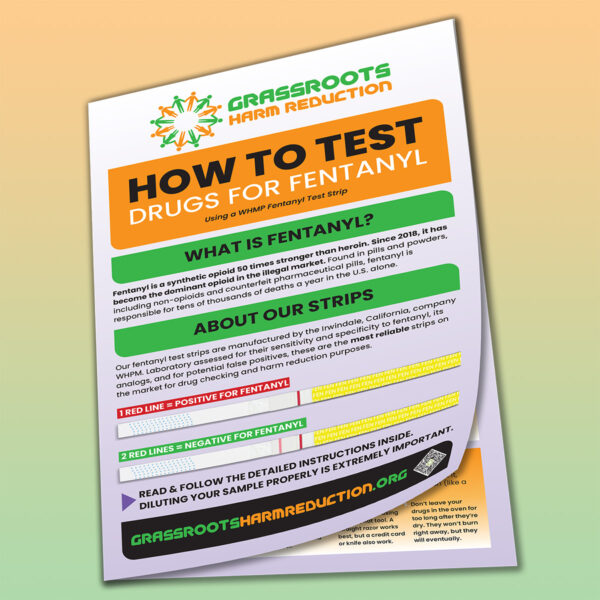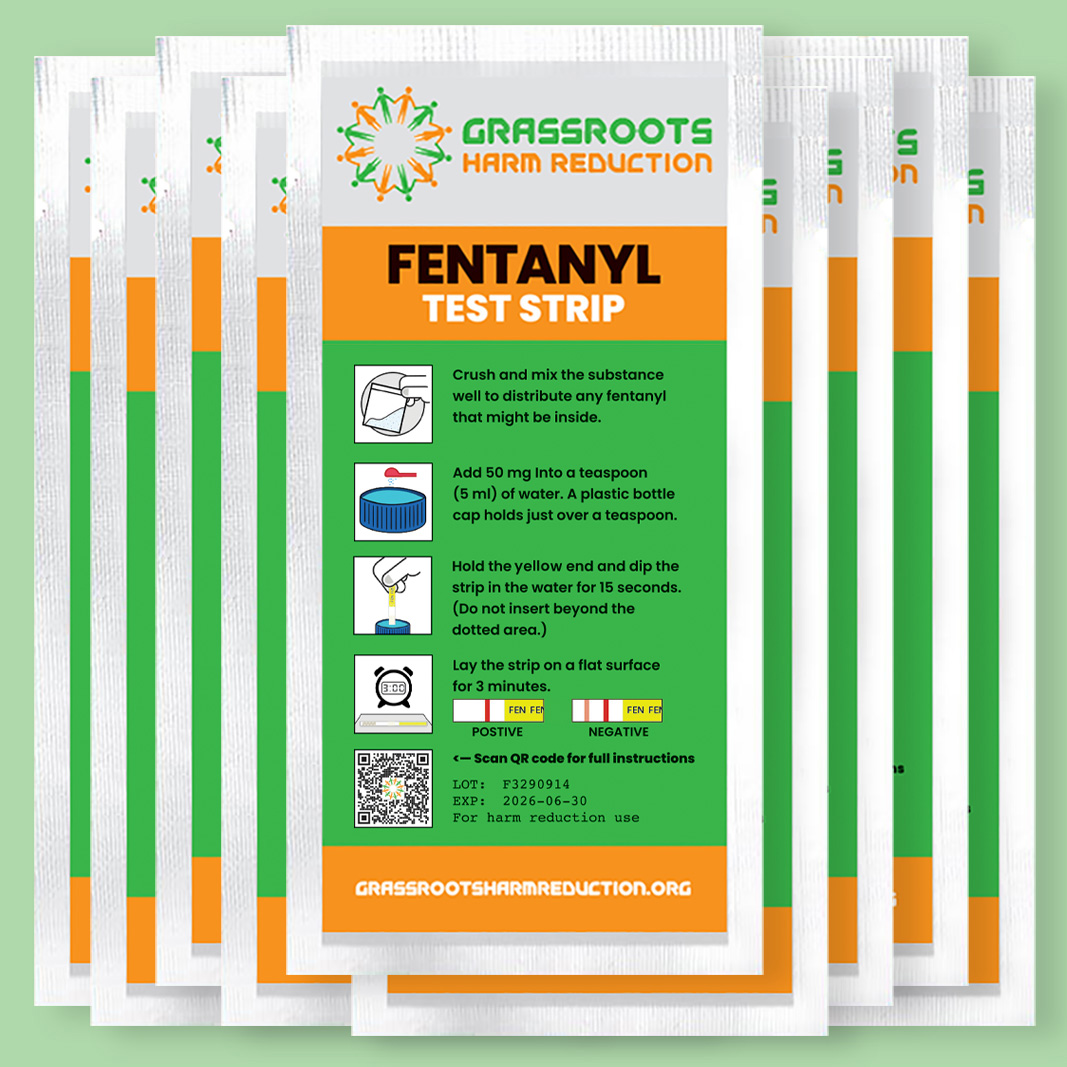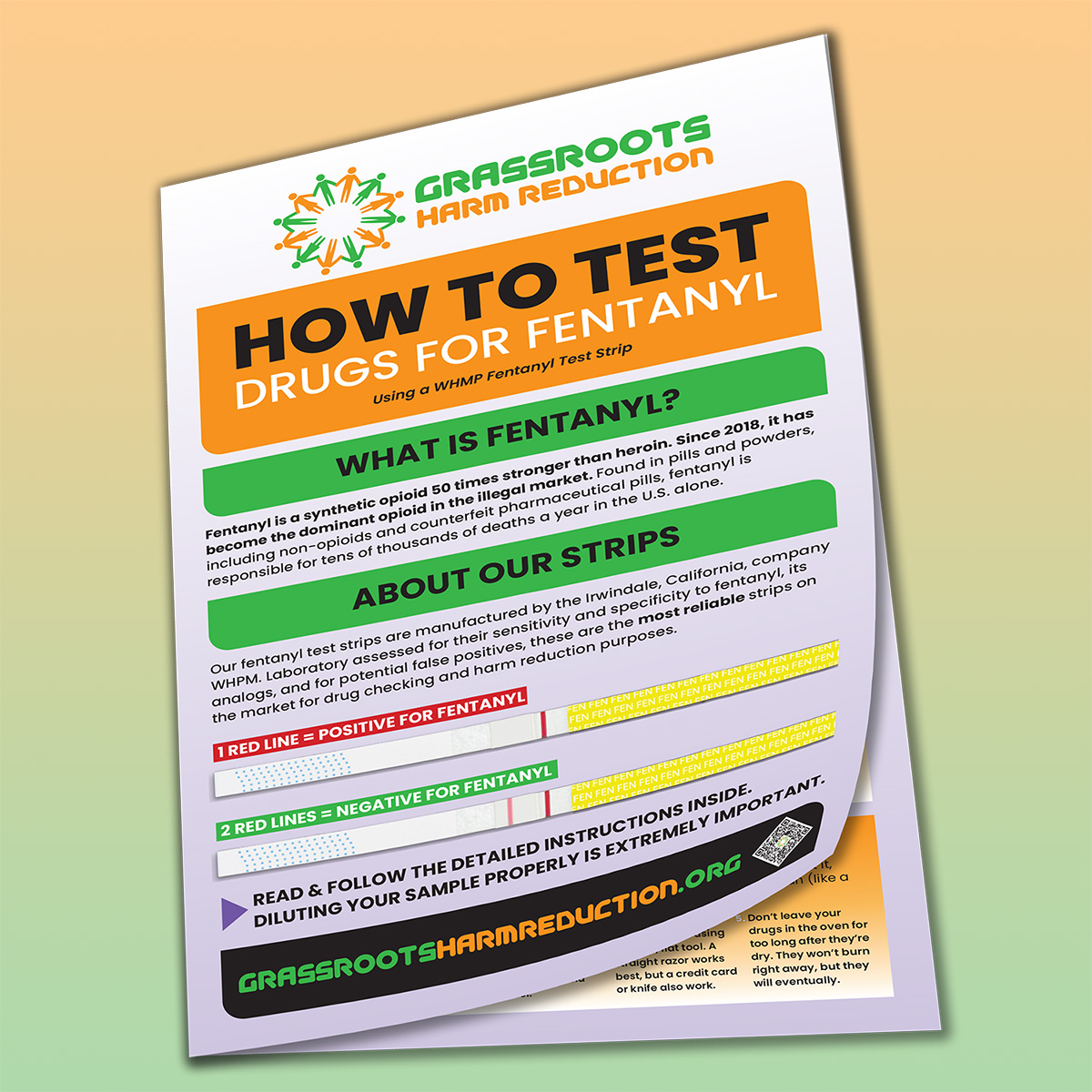Fentanyl Test Strips (Pack of 10)
$9.99
Manufactured by the California-based company, WHPM, and developed over the course of a year with the assistance and expertise of DanceSafe founder, Emanuel Sferios, our fentanyl test strips are specifically designed for harm reduction use (as opposed to urine testing). With a detection cutoff of 10 ng/ml, they are one of the most sensitive test strips on the market. They are also highly selective to fentanyl and its analogs, making them less likely to produce false positives by cross reacting with other, non-fentanyl related drugs.
Comes with one printed instruction sheet. Download full instructions here.
- Description
- Additional information
- Full Instructions
- More Information
Description


Additional information
| Weight | 1.25 oz |
|---|
Full Instructions



More Information
Background
Fentanyl test strips were originally developed for urine testing and have only recently begun to be used for harm reduction to check substances for fentanyl contamination. The two uses are very different. When testing substances, you are dealing with far higher concentrations of drugs than are typically found in urine. These higher concentrations can cause false positives if the strips being used were only designed for urine testing, or if new laboratory studies were not undertaken to determine accurate dilutions for drug checking purposes.
Most manufacturers do not perform these studies, and do not reformulate their urine strips for harm reduction use.
Our Fentanyl Test Strips
Our fentanyl test strips were manufactured by the Irwindale, California company, WHPM, and developed specifically for harm reduction use with the assistance and expertise of DanceSafe founder, Emanuel Sferios. Multiple laboratory studies have demonstrated that, unlike other strips on the market, they do not produce false positives with meth, MDMA, lidocaine, levamisole, nor most other commonly used drugs and drug cuts at the optimum harm reduction concentration of 10 mg/ml (50 mg into a teaspoon of water). *
The Importance of Sample Preparation
When contaminating other substances, fentanyl is rarely mixed evenly. This is called the “chocolate chip cookie effect” and is why the best recommendation is to dilute and test the entire batch (e.g., a whole pill or entire baggie of powder), then dehydrate the liquid in an oven to get the powder back (see full instructions). However, most people are unable or unwilling to do this, and will only test a small portion of their batch. Preparing the sample correctly in order to avoid false positive (and false negatives) is, therefore, extremely important. The best practices involve the following three-step process:
- Crush and mix – In order to reduce the chocolate chip cookie effect and redistribute as evenly as possible any fentanyl that might be present in the substance , the entire batch should be crushed and mixed thoroughly.
- Test as much as possible – To maximize the chance that the portion being tested will contain enough fentanyl to trigger a positive result (if fentanyl is present), test the largest amount you are willing. We recommend a minimum of 50 mg.
- Dilute only enough to avoid false positives – To maximize the chance of detecting even the tiniest amount of fentanyl that (hopefully) was captured in the chosen portion, dilute the portion only enough to avoid false positives, but not much more. For the WHPM strips, this is 10 mg/ml. (For example, dissolve 50 mg of substance into 5 ml of water.) This high concentration will be able to detect even very small amounts of fentanyl while avoiding false positives with most drugs and drug cuts.
Before using the strips, see the full instructions tab above.
* Diphenhydramine gives false positives with all fentanyl test strips on the market. Fortunately, diphenhydramine is not typically found contaminating non-opiod drugs.
Analytical Performance Evaluation: https://www.whpm.com/s/Fentanyl-White-Paper-v25.pdf




